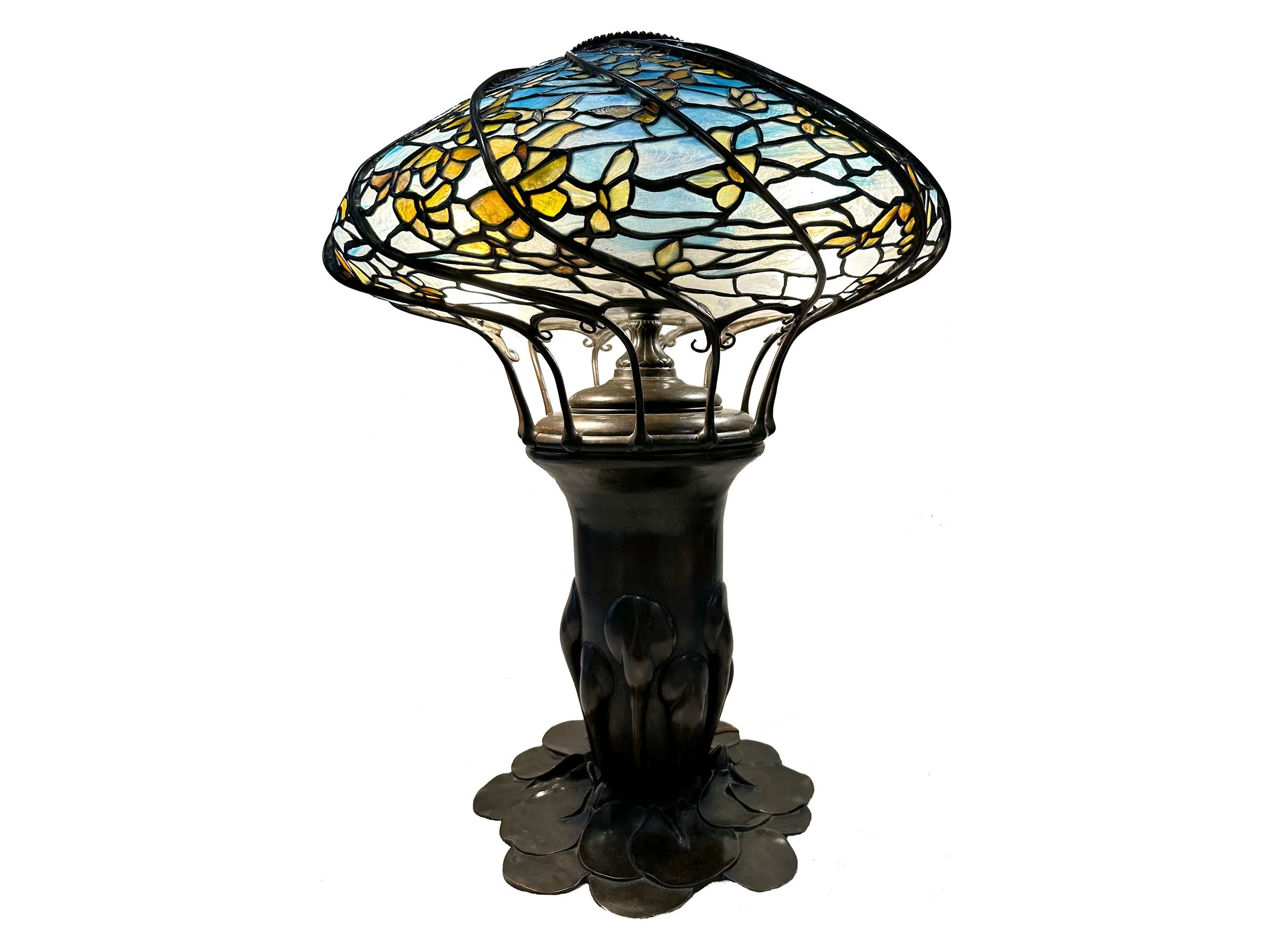Tiffany Studios
Tiffany Studios was a New York City-based company founded by Louis Comfort Tiffany in 1902. As the son of Charles Lewis Tiffany (1812–1902), founder of Tiffany & Co., he was able to enhance the marketability of his own wares by capitalizing on the Tiffany name established by his father. Prior to this, Louis C. Tiffany had been working as a painter and interior decorator for about two decades. He was known for his artistic innovation and contributions to the American Art Nouveau movement, and continued the legacy of his various earlier companies that produced iconic stained-glass lamps and other decorative art objects. Tiffany was the president and art director, and he was in charge of all the artistic and technical production, so to accomplish his goals, Tiffany encouraged designers and specialized workers to interpret creatively based on his own ideals. He employed many talented female artists, including Clara Driscoll, and other important designers included Will H. Low and Lydia Emmet, Frederick Wilson, Joseph Lauber, Edward P. Sperry, Agnes Fairchild Northrop, and Alice Carmen Gouvy. Under Tiffany’s watch, teams of talented designers and craftspeople translated his all-encompassing vision into beautiful objects. Tiffany Studios is also renowned for its innovative use of opalescent glass, particularly its Favrile glass, a type of iridescent glass developed by Tiffany. With the use of traditional leaded glass produced stained-glass windows and lamps, including famous designs like the Dragonfly and Lily lamps, bronze decorative objects, as well as blown-glass vases, pottery, jewelry, and more, that captivated an era.
He began producing lamps after Thomas Edison suggested the idea during their collaboration on the electric lighting of the first movie theater, the Lyceum. But it’s also believed that he began making lamps as a way to use up scraps from his window manufacturing business. Embracing the Art Nouveau style at the beginning of the 20th century, he instructed his craftsmen to create elaborate lamps to fit the new style. His lamps quickly became popular at home and abroad. Craftsmen set tiny pieces of glass in natural patterns, featuring flowers, butterflies, or dragonflies, while the bronze bases complemented the leaded shades. Later, some shades were made in folds from panels of pressed glass, creating the appearance of a tweedy fabric. Some of the original Tiffany’s were gas, later converted into electric lighting. In the early 1890s, Tiffany decided to concentrate on the large-scale production of stained glass windows, blown glass, lamps, and decorative household items for retail sale. Stained glass windows were almost always custom-designed for a specific client, and while many of his other decorative items were stock pieces, some were made as special design orders. His company was not a simple enterprise, so he maintained a design file to provide inspiration for the designers. The files included photographs of works created early in his career, of historic monuments of personal interest to Tiffany, and of sights and objects from his travels. With these measures in place, Tiffany secured the unity and quality of the overall production of his companies. For instance, the model number on the lamps indicates a specific design within their extensive catalog, creating dynamic and flowing patterns in their lamps.
Tiffany’s business began to fade just prior to World War I, and in 1917, Tiffany retired while allowing some of his employees to continue to sell wares as Tiffany Furnaces, though pieces were often made with parts long in stock that had already been marked Tiffany Studios or L. C. Tiffany. The Tiffany Studios company closed its operations in 1930, and its founder, Louis Comfort Tiffany, died in 1933, a few years after the company's closure.




